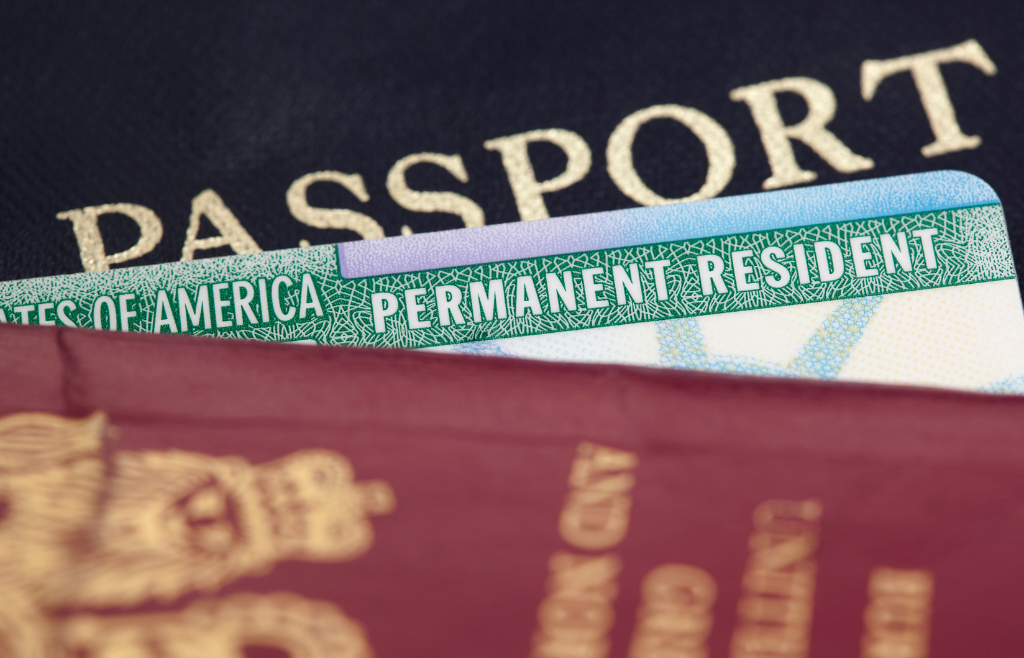Summary:
Marriage to a U.S. citizen or lawful permanent resident can lead to lawful permanent residence, but success depends on eligibility, timing, and strong documentation. Spouses of U.S. citizens are classified as immediate relatives, allowing faster processing, while spouses of green card holders often face visa wait times. Careful preparation, consistent records, and timely filings are essential to avoid delays or denials.
Marriage to a U.S. citizen or lawful permanent resident (LPR) is one of the most common paths toward lawful permanent residence in the United States. The process involves strict eligibility standards, detailed documentation, and careful attention to timing. Every step of the process is built to confirm the legitimacy of the relationship and compliance with immigration law. A strong, well-prepared application can prevent long delays and unnecessary complications that might otherwise jeopardize approval.
Marriage to a U.S. Citizen
When a U.S. citizen petitions for their spouse, the foreign national is classified as an “immediate relative.” This classification removes the numerical limits that apply to other visa categories, meaning there is no waiting period for an immigrant visa number. However, there is still a wait for the process to be completed. The process typically involves two main filings:
- Form I-130 (Petition for Alien Relative), submitted by the U.S. citizen spouse to prove the marriage is legally valid and genuine.
- Form I-485 (Application to Register Permanent Residence or Adjust Status), which the foreign spouse can often file concurrently if they are already in the United States.
Applicants must provide evidence showing the marriage is bona fide, such as shared financial accounts, joint property leases, or photographs from family events. For couples married less than two years at the time of approval, conditional permanent residence is granted for two years. Before that period expires, the couple must file Form I-751 to remove conditions and demonstrate that the relationship remains authentic. Failure to do so may result in loss of status and removal proceedings.
Marriage to a Lawful Permanent Resident
Marriage to a green card holder follows a similar process, but with additional timing considerations. Since spouses of LPRs fall under the “family preference” category, they must wait for a visa number to become available. The length of the wait depends on the foreign spouse’s country of origin and the current visa bulletin issued by the Department of State.
During this waiting period, the foreign spouse generally cannot adjust status if already in the U.S. on a temporary visa unless they maintain lawful status continuously. If abroad, the applicant will complete consular processing once the visa number is available, which includes an interview at a U.S. embassy or consulate and a medical exam conducted by an approved physician.
Given the potential for long processing times, couples should plan strategically. Monitoring the visa bulletin and maintaining lawful presence or consistent communication with U.S. Citizenship and Immigration Services (USCIS) helps ensure the process remains on track.
Key Evidence and Best Practices
Strong documentation is the foundation of a successful marriage-based green card application. While every case differs, effective applications share several characteristics:
- Comprehensive proof of shared life: Include consistent financial, residential, and social evidence. Examples include joint tax returns, insurance policies naming one another as beneficiaries, or birth certificates of shared children.
- Accurate and consistent forms: Minor inconsistencies, such as differing addresses or timelines, can trigger requests for evidence or even suspicion of fraud.
- Timely responses: USCIS deadlines for supplemental materials are strict. Missing them can delay or end the application.
- Preparedness for the interview: Both spouses should be able to answer detailed questions about their life together, from daily routines to family relationships.
For conditional residents, keep detailed records of continued cohabitation and financial commingling throughout the two-year conditional period. This documentation will be critical when filing to remove conditions.
Ensure Accuracy with Pollak PLLC
Marriage-based immigration offers a clear route toward lawful permanent residence, but success depends on careful timing, complete documentation, and awareness of the evolving requirements set by U.S. immigration authorities. The attorneys at Pollak PLLC bring precision and strategic insight to every stage of the process. For personalized assistance with your marriage-based green card application, call (214) 305-2266 to schedule a consultation.




